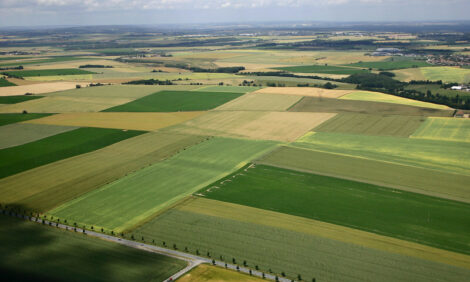



Decisions Are Decisive in the Dairy Business
URBANA, US - Although faced with daunting feed costs challenges, dairy producers need to be careful when responding, said a University of Illinois Extension dairy specialist."Some decisions, seemingly made for the best economic reasons, can turn out to be wrong," said Mike Hutjens.
For instance, decisions that appear on the surface to make sense may make things worse. These include removing feed additives because they add to feed costs; dropping expensive fuzzy cottonseed; adding five pounds of straw to the ration to reduce forage levels; dropping hay from the ration; or simply assuming that the answer to high feed costs is to lower them.
"Because of current milk prices and milk component values, it is a mistake to sacrifice milk production," said Hutjens. "By reducing feed intake by one pound of dry matter, for instance, you may save 10 cents but lose 36 to 40 cents a day in milk income."
* "Be sure to monitor milk price and feed cost changes as these two factors continue to shift due to spring planting intentions and consumer dairy product demand." |
|
Mike Hutjens, University of Illinois Extension dairy specialist.
|
A similar situation can apply to yeast/yeast culture additives. Research indicates that yeast/yeast culture products have a benefit to cost return of 5:1.
"If the yeast product costs six cents, it can result in 30 cents return due to higher feed intake during the transition period, higher milk yield, improved rumen environment, and/or less metabolic problems," said Hutjens.
While fuzzy cottonseed emerges as too expensive when put through breakeven prices software programs, it does provide other important factors that can't be measured by computers. These include functional fiber, slower release of unsaturated oil, and complementing high corn-silage based rations.
"If too much straw is added to reduce forage levels, it will reduce total dry matter intake, reducing nutrient levels and milk yield," Hutjens noted. "Before adding straw, evaluate the current ration levels and what the straw will add.
"Generally, add one-half pound of straw to the ration and monitor cow response -- milk yield, milk components, and manure score -- for one to two weeks. If the response is favorable, consider adding another half-pound of straw. But adding over two pounds of straw may be too high for your enterprise."
Even though high hay prices are a tempting factor to trigger cutting its use, Hutjens noted that it also can improve rumen digestion and microbial growth.
"Adding five pounds of high-quality hay could increase milk yield by three to five pounds," he said. "If milk is worth 18 cents a pound, each pound of hay is worth 11 to 18 cents a pound or $220 to $360 a ton.
"Also, be sure to monitor milk price and feed cost changes as these two factors continue to shift due to spring planting intentions and consumer dairy product demand."
TheCattleSite News Desk


